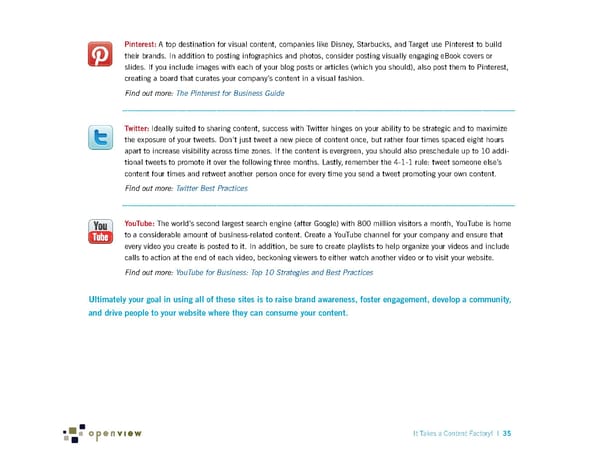Pinterest: A top destination for visual content, companies like Disney, Starbucks, and Target use Pinterest to build their brands. In addition to posting infographics and photos, consider posting visually engaging eBook covers or slides. If you include images with each of your blog posts or articles (which you should), also post them to Pinterest, creating a board that curates your company’s content in a visual fashion. Find out more: The Pinterest for Business Guide Twitter: Ideally suited to sharing content, success with Twitter hinges on your ability to be strategic and to maximize the exposure of your tweets. Don’t just tweet a new piece of content once, but rather four times spaced eight hours apart to increase visibility across time zones. If the content is evergreen, you should also preschedule up to 10 addi- tional tweets to promote it over the following three months. Lastly, remember the 4-1-1 rule: tweet someone else’s content four times and retweet another person once for every time you send a tweet promoting your own content. Find out more: Twitter Best Practices YouTube: The world’s second largest search engine (after Google) with 800 million visitors a month, YouTube is home to a considerable amount of business-related content. Create a YouTube channel for your company and ensure that every video you create is posted to it. In addition, be sure to create playlists to help organize your videos and include calls to action at the end of each video, beckoning viewers to either watch another video or to visit your website. Find out more: YouTube for Business: Top 10 Strategies and Best Practices Ultimately your goal in using all of these sites is to raise brand awareness, foster engagement, develop a community, and drive people to your website where they can consume your content. It Takes a Content Factory! | 35
 It Takes a Content Factory! Page 40 Page 42
It Takes a Content Factory! Page 40 Page 42